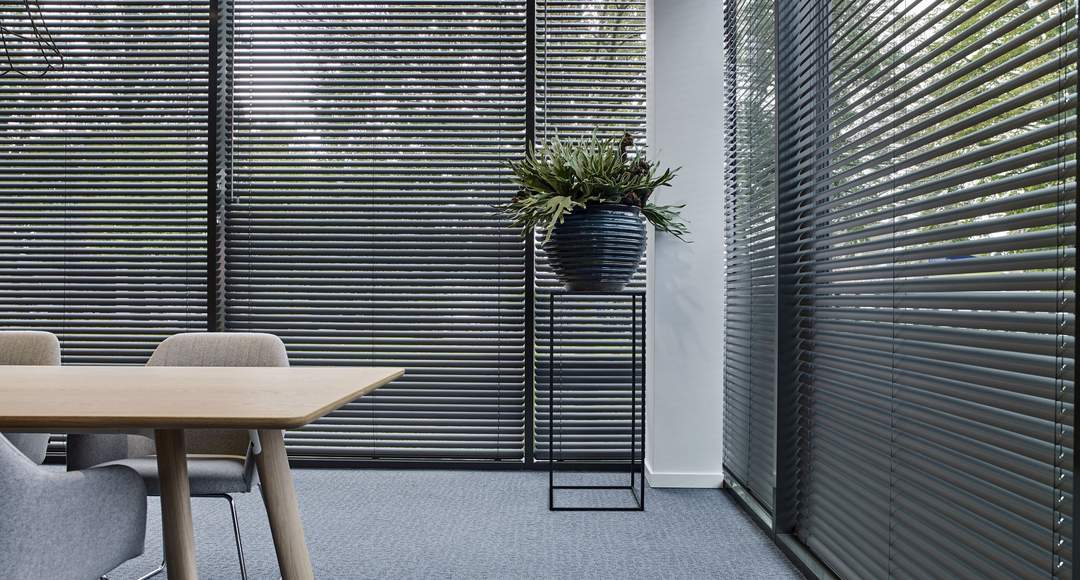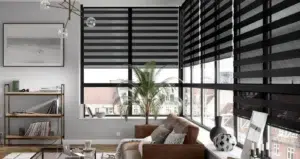Blinds are an essential part of home and office interiors. They help control light, provide privacy, and enhance the aesthetics of a space. Two common types of blinds are Venetian blinds and conventional blinds. While both serve the same fundamental purpose, they differ in design, function, and usability. This article examines the differences between Venetian blinds and conventional blinds, covering their structure, material, installation, functionality, maintenance, cost, and suitability for different environments.
Structure and Design
Venetian blinds have horizontal slats suspended by a series of cords or tapes. These slats can be tilted to control light entry or raised completely for an unobstructed view. The slats are usually made of wood, aluminum, or plastic.
Conventional blinds include various types, such as roller blinds, Roman blinds, and vertical blinds. They do not have slats but are made from continuous fabric or synthetic materials. Roller blinds roll up into a tube, Roman blinds fold neatly, and vertical blinds have vertical panels that can be tilted and drawn sideways.
Key Differences:
- Venetian blinds have slats, while conventional blinds often consist of a single fabric or panel.
- Conventional blinds, such as roller and Roman blinds, come in different styles, while Venetian blinds have a consistent horizontal slat design.
- Venetian blinds allow partial light control through slat tilting, whereas conventional blinds primarily control light by adjusting their position.
Material and Durability
Venetian blinds are typically made of aluminum, wood, or PVC. These materials are sturdy, moisture-resistant, and long-lasting. Aluminum Venetian blinds are lightweight and resistant to rust, making them suitable for humid areas like kitchens and bathrooms. Wooden Venetian blinds add a natural look but require maintenance to prevent warping.
Conventional blinds are made from fabric, synthetic materials, or vinyl. Roller and Roman blinds often use polyester, cotton, or linen, which offer a softer appearance but are more prone to dust accumulation and wear over time. Vertical blinds are usually made of PVC or fabric.
Key Differences:
- Venetian blinds are more durable due to their rigid materials.
- Fabric-based conventional blinds may wear out faster, especially in high-moisture areas.
- Venetian blinds resist humidity better than fabric-based conventional blinds.
Light and Privacy Control
Venetian blinds provide adjustable light control. By tilting the slats, users can regulate the amount of sunlight entering a room without raising the blinds completely. This flexibility also allows for better privacy control, as slats can be angled to block outside views while still letting in light.
Conventional blinds, especially roller and Roman types, either allow full light entry or complete blackout. Some fabric blinds offer light-filtering options, but they do not allow partial control like Venetian blinds. Vertical blinds offer better light control than roller or Roman blinds since they can be adjusted similarly to Venetian blinds.
Key Differences:
- Venetian blinds allow precise light control through slat tilting.
- Conventional blinds mostly provide full or no light entry.
- Vertical blinds offer some adjustability but are not as fine-tuned as Venetian blinds.
Maintenance and Cleaning
Due to their slatted design, Venetian blinds require regular dusting. Cleaning each slat individually takes time but is manageable with a damp cloth or vacuum attachment. Aluminum and plastic slats are easier to clean than wooden ones, which need special care.
Conventional blinds, especially fabric ones, require more effort to maintain. They can accumulate dust, stains, and moisture, making them harder to clean. Roller and Roman blinds may need occasional washing or vacuuming, while vertical blinds can be wiped down more easily.
Key Differences:
- Venetian blinds require more frequent dusting but are easier to wipe clean.
- Fabric-based conventional blinds can stain easily and require deeper cleaning.
- Vertical blinds are easier to maintain than roller or Roman blinds.
Installation and Operation
Venetian blinds are mounted inside or outside the window frame and require proper measurement for a perfect fit. They operate using a cord-and-tilt mechanism, which may require more effort compared to a simple pull-chain or motorized system.
Conventional blinds, particularly roller and Roman blinds, are easier to install. They often come with a simple rolling mechanism or a motorized option for added convenience. Vertical blinds require a track system but are also relatively easy to set up.
Key Differences:
- Venetian blinds require precise installation and manual operation.
- Conventional blinds offer simpler operation with more motorized options.
- Vertical blinds need track installation but are easier to control than Venetian blinds.
Cost Comparison
Venetian blinds tend to be more expensive due to their material and construction. Wooden Venetian blinds are particularly costly, while aluminum and PVC versions are more affordable.
Conventional blinds have a broader price range. Roller blinds are typically budget-friendly, while high-quality Roman blinds can be expensive due to the fabric and design.
Key Differences:
- Venetian blinds, especially wooden ones, are costlier.
- Roller blinds are usually more affordable than Venetian blinds.
- The cost of conventional blinds varies based on material and design.
Best Use Cases
Venetian blinds work well in offices, living rooms, and bedrooms where adjustable light control is important. They are also suitable for kitchens and bathrooms if made from moisture-resistant materials.
Conventional blinds are better suited for spaces requiring full light blockage or a softer look, such as bedrooms and home theaters. Roller blinds are ideal for minimalist designs, while Roman blinds add an elegant touch to formal areas.
Key Differences:
- Venetian blinds suit areas needing adjustable light control.
- Conventional blinds are better for complete blackout and softer aesthetics.
- Vertical blinds work well for large windows and sliding doors.
Conclusion
Both Venetian and conventional blinds have their own benefits. Venetian blinds offer precise light control, durability, and a sleek look, making them suitable for modern homes and offices. Conventional blinds, such as roller and Roman blinds, provide a more uniform appearance, better blackout options, and simpler operation. The choice between the two depends on factors such as budget, maintenance, and personal preference.
Frequently Asked Questions (FAQs)
1. Are Venetian blinds better than roller blinds?
Venetian blinds offer more light control, but roller blinds provide a cleaner look and are easier to operate.
2. Do Venetian blinds block out all light?
No, they provide adjustable light control but do not offer total blackout like some fabric blinds.
3. Which blinds are best for large windows?
Vertical blinds are best for large windows and sliding doors due to their easy operation and coverage.
4. Are Venetian blinds hard to clean?
They require regular dusting, but aluminum and PVC versions are easy to clean.
5. Which blinds last longer?
Venetian blinds made from aluminum or PVC are more durable than fabric-based conventional blinds.





